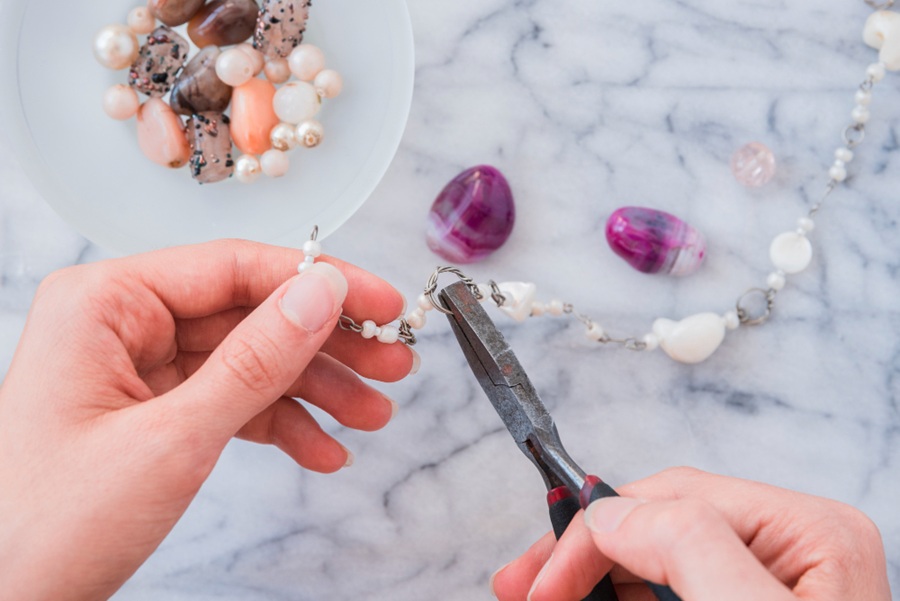Thinking about enrolling in a diamond setting school? That’s a big move, and a smart one if you’re aiming to master a highly specialized, hands-on craft.
But let’s be real: not all schools are created equal. It’s easy to get distracted by shiny websites or impressive-sounding course names. What really sets a great program apart is what happens in the classroom, and whether or not it actually prepares you for real-world success.
Before you commit time, money, and energy, make sure you’re asking the right questions. These aren’t just surface-level queries; they’ll help you get to the core of what matters.
1. What’s the student-to-instructor ratio?
This one matters more than you might think. Diamond setting is incredibly detailed work, and having personal guidance can make or break your progress.
If one instructor is juggling 20 students, you might end up doing more guessing than learning. Smaller ratios usually mean more feedback, more hands-on support, and faster improvement. Don’t be shy—ask about this directly.
2. How advanced is the training environment?
Technology is changing the jewelry industry fast. A school that still runs things the way they did 20 years ago? That’s a red flag. Instead, look for programs that incorporate modern techniques alongside traditional skills. That balance is key.
If you’re aiming for a future-proof education, find out if the school is considered the most technologically advanced diamond setting school in its category. That doesn’t just mean flashy equipment—it means smart integration of tools that are relevant in the industry today.
Look for things like:
- Microscopes at every bench
- Access to digital design tools and 3D printers
- Training in CAD or related tech, even if it’s not the main focus
- Laser welding equipment for more complex settings
3. Do they teach multiple setting styles?
It’s one thing to learn basic prong settings. But what about pavé, bezel, flush, tension, channel, or gypsy settings? The more variety you’re exposed to, the better your skills, and the more career paths you’ll unlock. You don’t want to be limited by a program that only covers the basics.
Ask for a breakdown of what techniques are taught and how in-depth each one goes. If they can’t give you a detailed outline, that’s worth noting.
4. How much time is spent actually setting stones?
Some programs sound great on paper but spend half the course on theory, design, or unrelated tools. And while that’s fine in moderation, it shouldn’t come at the cost of bench time.
Stone setting is physical. Your hand strength, control, and muscle memory develop through repetition. The only way to get better is to spend hours doing it.
So find out:
- How much time per week you’ll be actively setting stones
- Whether you’re practicing with real stones or simulated ones
- If the course builds in repetition or moves on too quickly
5. Who’s teaching—and what’s their background?
You can tell a lot about a school by the people running it. Are the instructors working professionals? Do they have experience in high-end or custom jewelry? Have they been setters themselves, or are they general jewelers?
A great teacher doesn’t just know how to do the work. They know how to explain it, correct technique, and spot bad habits before they become ingrained.
You want someone who’s been in the trenches. Bonus points if they’ve worked with luxury clients, trained other setters, or have experience in both traditional and modern settings.
6. Can you see actual student work?
This might be the most telling sign of all. A strong school should be able to show you examples of student pieces before and after the course. This gives you a real sense of how much people improve, not just what the final product could look like, but what it actually does.
Ask for photos or videos of:
- Before-and-after examples of student settings
- Progress shots during the course
- Close-ups of prong alignment, symmetry, and polish
You’re looking for consistency and attention to detail, not just one standout piece.
7. What happens after the course ends?
Some schools are just that, schools. Others are pipelines into the industry. Find out if the school has connections with jewelers, studios, or brands. Ask whether they offer any support with job placement, internships, or ongoing mentorship after graduation.
Even better? Ask if past students have gone on to work in the kind of settings you want to work in. High-end custom shops? Repair-focused studios? Big-name brands?
The goal is to walk out ready for the bench, not back to square one.
8. How are you evaluated?
Are you just practicing on your own, or are instructors giving you direct feedback?
Some schools offer regular critiques and even exams or final assessments. That kind of structure might sound intense, but it’s often where the most growth happens.
You want to know:
- How often instructors check your work
- If there’s any formal review process
- Whether you’re given personalized goals or milestones
9. What’s included in the tuition?
Always check what the cost covers. Some schools include tools, materials, and stones. Others require you to bring your own, so tuition might look cheaper than it actually is.
Ask for a breakdown of what’s included and what’s extra. You’ll want to budget accordingly and avoid surprises later.
Your Skills Start with the Right Questions
Choosing a diamond setting school is a big investment, but the right one can fast-track your skills, confidence, and career.
Don’t settle for vague promises or glossy marketing. Ask questions that get to the heart of how they teach, what they teach, and how well they prepare you for the real world.
The more specific you get now, the better prepared you’ll be later. And that’s the kind of clarity that leads to great craftsmanship.










